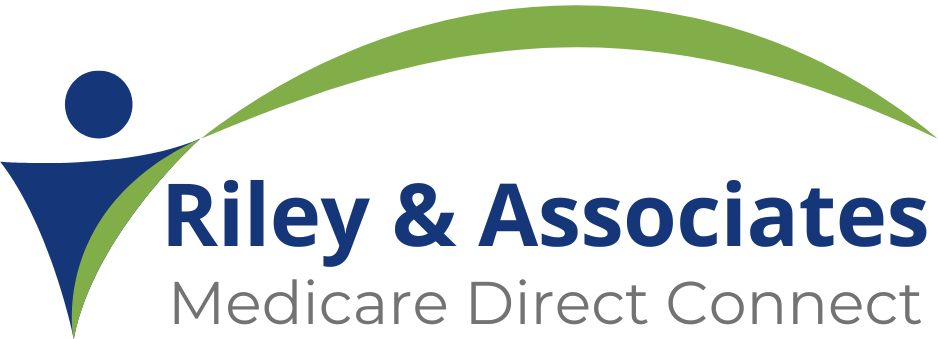Navigating Medicare: Comparing Medicare Plans

Medicare is a vital program that provides health insurance coverage to millions of Americans aged 65 and older, as well as some younger individuals with disabilities. However, the complexity of Medicare plans can be overwhelming, especially when it comes to choosing between different options. In this guide, we’ll break down the key differences between Original Medicare and Medicare Advantage, explore how to compare Medicare Supplement plans (Medigap), and delve into the specifics of Medicare Part D Prescription Drug Plans.

Original Medicare vs. Medicare Advantage: Which is Right for You?
Original Medicare
Original Medicare consists of two parts: Part A (Hospital Insurance) and Part B (Medical Insurance). Part A covers inpatient hospital stays, skilled nursing facility care, hospice care, and some home health care. Part B covers certain doctors’ services, outpatient care, medical supplies, and preventive services.
Pros:
- Nationwide coverage: Original Medicare is accepted by most healthcare providers across the country.
- No network restrictions: You can see any healthcare provider that accepts Medicare.
- Flexibility: You can add a Medicare Supplement plan (Medigap) to help cover out-of-pocket costs.
Cons:
- Limited coverage: Original Medicare does not cover prescription drugs (Part D) or routine dental, vision, and hearing care.
- Out-of-pocket costs: You’ll have deductibles, coinsurance, and copayments, which can add up quickly without additional coverage.
Medicare Advantage
Medicare Advantage (Part C) is an alternative to Original Medicare offered by private insurance companies approved by Medicare. These plans must cover all the services that Original Medicare covers, and they often include additional benefits such as prescription drug coverage (Part D), dental, vision, hearing, and wellness programs.
Pros:
- Comprehensive coverage: Medicare Advantage plans typically include all-in-one coverage for medical, hospital, and prescription drug benefits.
- Cost savings: Many Medicare Advantage plans have lower out-of-pocket costs than Original Medicare, including caps on annual spending.
- Additional benefits: Some plans offer extras like gym memberships, transportation to medical appointments, and telehealth services.
Cons:
- Network restrictions: Medicare Advantage plans often have provider networks, meaning you may need to choose healthcare providers within the plan’s network.
- Less flexibility: You may need referrals to see specialists, and coverage may vary if you travel outside the plan’s service area.
Which is Right for You?
Choosing between Original Medicare and Medicare Advantage depends on your individual healthcare needs, budget, and preferences. If you value flexibility and nationwide coverage, Original Medicare paired with a Medigap plan may be the best option. On the other hand, if you’re looking for comprehensive coverage with added benefits and potential cost savings, a Medicare Advantage plan could be more suitable.
How to Compare Medicare Supplement (Medigap) Plans
Understanding Medigap
Medicare Supplement plans, also known as Medigap, are offered by private insurance companies to fill the gaps in Original Medicare coverage. There are ten standardized Medigap plans (A, B, C, D, F, G, K, L, M, N), each offering different levels of coverage. It’s important to note that Medigap plans do not include prescription drug coverage; you’ll need to enroll in a separate Part D plan for that.
Comparing Medigap Plans
When comparing Medigap plans, consider the following factors:
- Coverage: Review what each plan covers, including deductibles, coinsurance, and copayments for Medicare Part A and Part B services.
- Premiums: Compare the monthly premiums for each plan. Keep in mind that higher premiums may offer more comprehensive coverage.
- Out-of-pocket costs: Consider the out-of-pocket costs, such as deductibles and coinsurance, that you’ll be responsible for with each plan.
- Provider network: Unlike Medicare Advantage plans, Medigap plans allow you to see any healthcare provider that accepts Medicare.
Choosing the Right Medigap Plan
The best Medigap plan for you depends on your healthcare needs and budget. If you anticipate frequent doctor visits or hospital stays, a plan with lower out-of-pocket costs may be beneficial. Conversely, if you’re generally healthy and don’t expect many medical expenses, a plan with lower premiums and higher cost-sharing may suffice.
Understanding Medicare Part D Prescription Drug Plans
Overview of Part D
Medicare Part D is prescription drug coverage offered by private insurance companies approved by Medicare. These plans help cover the cost of prescription medications, including generic and brand-name drugs. It’s important to enroll in a Part D plan if you don’t have other creditable prescription drug coverage to avoid late enrollment penalties.
Key Considerations for Part D Plans
- Formulary: Each Part D plan has a formulary, which is a list of covered prescription drugs. Check if your medications are included in the plan’s formulary and at what cost.
- Premiums and Deductibles: Compare the monthly premiums, annual deductibles, and cost-sharing (e.g., copayments or coinsurance) for medications under different Part D plans.
- Coverage Gap (Donut Hole): Be aware of the coverage gap, also known as the “donut hole,” where you may pay a higher percentage of drug costs until catastrophic coverage kicks in.
- Pharmacies: Confirm that your preferred pharmacies are in the plan’s network to ensure convenience and cost savings.
Selecting a Part D Plan
When selecting a Part D plan, consider factors such as your current medications, pharmacy preferences, monthly budget, and any coverage gaps you want to avoid. Use Medicare’s online Plan Finder tool or consult with a licensed insurance agent to compare Part D plans based on your specific needs.
In conclusion, navigating the complexities of Medicare requires careful consideration of your healthcare needs, budget, and coverage preferences. Whether you choose Original Medicare with or without a Medigap plan or opt for a Medicare Advantage plan with added benefits, understanding the differences and comparing options can help you make an informed decision. Similarly, selecting the right Medicare Part D Prescription Drug Plan involves evaluating formularies, premiums, coverage gaps, and pharmacy networks to ensure comprehensive medication coverage. To make this process smoother, it’s important to have a trusted advisor by your side who can help you better understand the different aspects when comparing plan options and even deciding what coverage you need. Consider consulting with a licensed insurance agent you trust to get personalized guidance and support in navigating your Medicare journey.
Latest Posts
Medicare Part D Changes in 2026: What You Need To Know
If you have Medicare Part D coverage or are helping a loved one navigate their prescription drug plan, it’s important…
Turning 62? Your Medicare Future Starts NOW!
Turning 62 often feels like a significant milestone, a peek into the next exciting chapter of life. While full Medicare…
Navigate Medicare Enrollment
A Comprehensive Step-by-Step Guide to Enrolling in Medicare by Riley and Associates Medicare is a vital health insurance program for…



